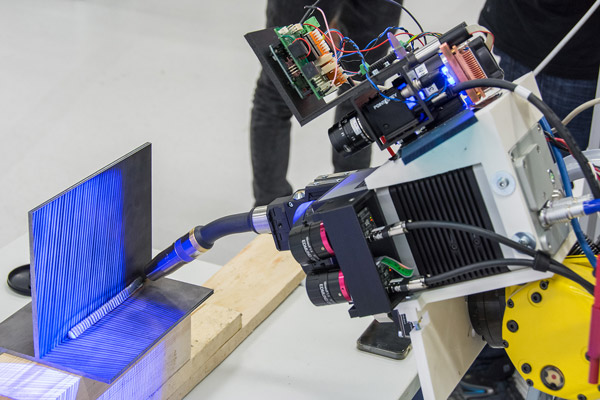Large steel components (> 50 m2) are often welded manually as single pieces. To automate these processes, two tasks arise for measuring technology: the 3D positioning of the welding machine and the process control at the welding seam. For this purpose, Fraunhofer IOF Jena developed a 3D sensor system that can measure both the joining gap and the weld seam with high resolution.
The multispectral 3D sensor technology is attached to a welding robot, which is intended to enable cost-effective and flexible production of steel components, especially for medium-sized companies. Among other things, a mobile cable pull system was developed by the TH Deggendorf, which can replace a cost-intensive stationary portal system.
